This is a photography blog, right? So how come a Swiss Roll 1AKA jelly roll, cream roll, roulade, Swiss log or Biskuitrolle is such a star. The Swiss Roll story (or, perhaps, we should say “saga”) is the most-read story on Macfilos, spawning several sequels and world-wide interest. Hardly a day goes by without a message from some corner of the globe enquiring if we ever tracked down the mystery couple from 1950, their dog and their BMW cabriolet.
Only this week, we discovered a strange YouTube video which consists of a mishmash of odd photos with a robotic narrator reading from an old published article. View it here if you are in the mood to be amused.
The disappointing answer is NO, we still don’t know who they are. On the other hand, we know a lot about them, their little dachshund and their car; how they took a road trip from Zürich, through Switzerland and on to Italy in their pre-war tourer; where they stopped to take photographs; which table they used in a particular café; and which hotel room they occupied. It’s all down to some initial sleuthing by William Fagan and a lot of effort by readers, many of whom took the trouble to visit locations in Switzerland and identify locations in the photographs.
But the story is fascinating nonetheless.
Over to Dublin
It all started in Ireland, where resides one of the world’s greatest experts on vintage Leicas and old lenses. William Fagan had successfully bid at auction for a couple of mid-thirties Leica cameras, as he does quite frequently. Nothing remarkable in that. A black Leica III from 1935 came with a brass FILCA cassette inside, and it contained film. That camera had been delivered from the Leitz factory to a Swiss dealer.
The second camera, a chrome Leica IIIa was accompanied by a box of FILCA cassettes and one of those also contained film. The camera had been delivered initially to Berlin, but soon found its way to Sweden. According to a note inside the box, the camera was used at an event in Sweden which celebrated the 200th anniversary of the publication of a famous book about botany by Linnaeus in June 1935.
Unfortunately, William could not remember which of the two cameras had contained the cassette, which prevents one obvious route for identification. He was able to trace both cameras at the Leica Archive. However, this didn’t seem important at the time. The problem was how to develop such an old film. The usual techniques needed a great deal of improvisation. Fortunately, he has a good friend, Mella Travers, who runs The Darkroom in Dublin, a specialist photographic processing company.
Looks like a Leica
To finish up on the camera angle, all I know for certain is that a Leica was used, as the cassette could only be used in a Leica camera. The FILCA brass cassette could have ‘joined-up’ with one of my Leicas at any stage in its long history since 1950. On the other hand, it might have been with the camera all the time since 1935. We might never know.
William Fagan
Mella was just the person because her specialist knowledge enabled her to retrieve passable negatives from what was originally thought to be pre-war Perutz film. There was an element of hubble-bubble-toil-and-trouble to the process, with the indomitable William stirring the brew for several hours. What emerged, however, was beyond anyone’s expectations. It posed so many questions and set Our Man in Dublin off on a quest that still continues.
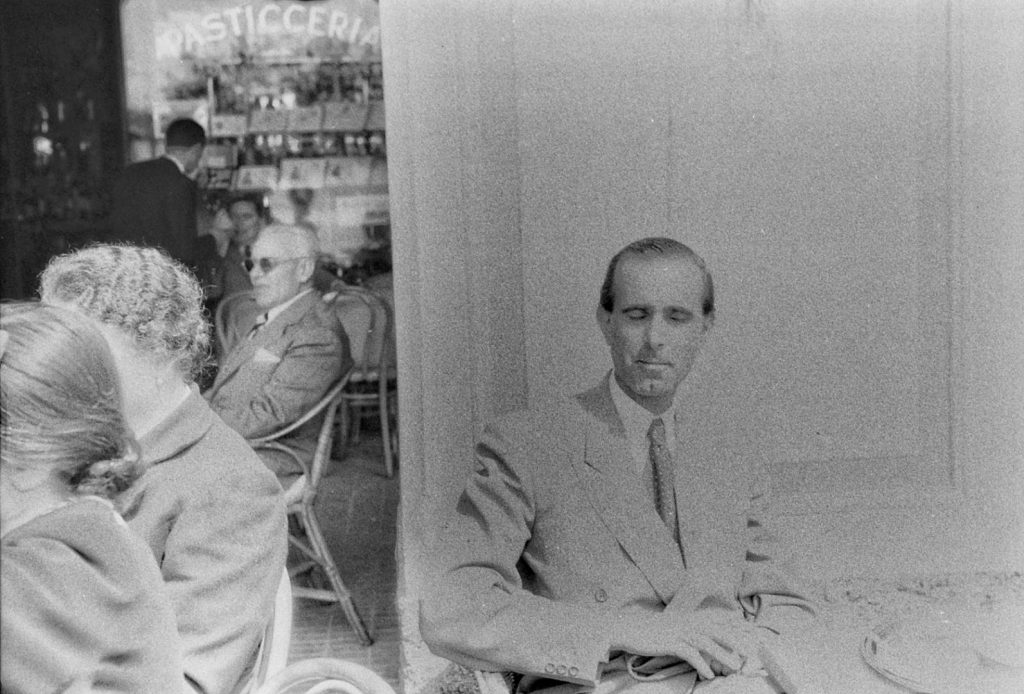
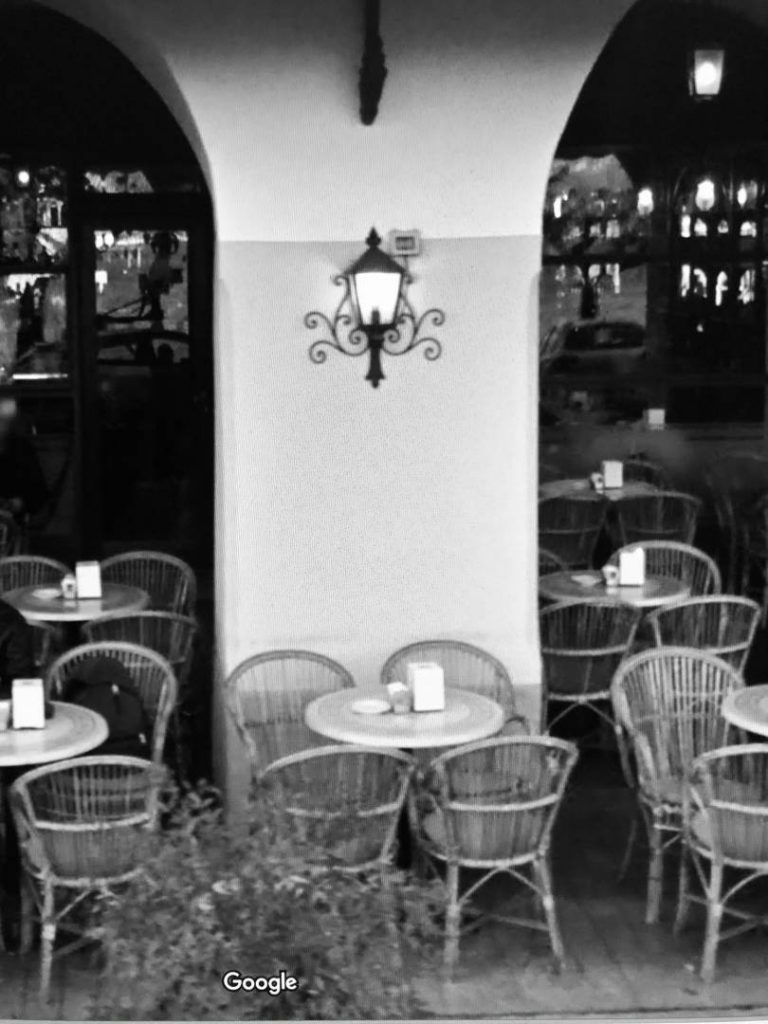
The pictures
Just over 20 frames of the 36-frame film had been exposed, and the results were stunning, especially considering the age of the material and the amount of guesswork that had done into the development process. William was introduced to the mystery couple that would occupy much of his time, involve Macfilos, and subsequently the world’s press.
William first saw a youngish couple with a vintage car in a city which appeared to be somewhere in the German-speaking world, probably Germany, Austria, or Switzerland. There followed a series of photographs tracing a journey through what was almost certainly Switzerland. The couple, their rather cute little dachshund and their car were frequently in the frame, although the majority of pictures featured the lady of the story, indicating that the man was the main photographer.
I soon got involved as editor of Macfilos. Looking for a suitable headline, I thought of Swiss Roll. It describes perfectly the roll of film so painstakingly developed by William and Mella. Macfilos published the story and it created an immediate sensation. An artocicle and link on the BBC website prompted enquiries from all over the world, and features appeared in a vast range of publications. Altogether, we calculated that the Swiss Roll story enjoyed between five and six million hits worldwide. And those are just from the media we were aware of.
Amateur sleuths
This amount of interest was reflected in Macfilos traffic and a bulging comments section — by far our busiest-ever period. Readers set themselves up as amateur sleuths, concentrating on identifying the locations in the photographs and on identifying the couple and their car.
It didn’t take long to identify the starting point as Bahnhofsplatz in Zürich. Furthermore, thanks to the involvement of Macfilos sleuths, it became possible to narrow the date to a month in 1950. This was not, as at first thought, a set of pre-war snapshots. It was definitely post-war, taken by a camera that was already 15 years old.
Identifying the locations
Bahnhofsplatz was one thing. Posters and other indicators made it relatively easy (with the help of readers) to be sure of that. But, once on the road, the identification process became more difficult. The first stop, some 98 km from Zürich, was Bad Ragaz which was identified from a picture of the old town hall taken from a height. Again, thanks to local readers, we determined that the particular frame had been taken from the window of a fourth-floor room in the Tamina hotel. The hotel still exists, but sadly all visitor records for the period have been lost or destroyed. Disappointment No. 1.
The trip continued, from Bad Ragaz to St Moritz, a distance of 104 km. En route, we caught a clear glimpse of the Julier Hospiz on the Julier Pass and, for the first time, a clear image of the BMW 315 cabriolet and its number plate AB52:3287. Opportunity No. 2, followed by Disappointment No. 2 as all efforts to trace the number came to naught. It was a US Occupation number issued in Garmisch-Partenkirchen, Bavaria. But all records have been lost.
Day trip clues
Our mystery couple stopped again in St Moritz and then continued to Menaggio on Lake Como. Locations en route have been identified by Macfilos readers. Macfilos author Chris Rodgers identified a lakeside shot and even calculated that the picture of the steamer was taken from the Grand Hotel Victoria, where another night (or two) was spent.
The couple found time for a car trip to nearby Lenno and a steamer excursion to Bellagio (soon identified from the picture of Via Giuseppe Garibaldi). Remarkably, back in Menaggio and thanks again to Chris and another reader, Toby Vickers, we were able to identify the very table in a café where the couple spent some time. The café still exists, and the table is more or less in the same position. And, judging by the shadows, our investigators could even determine the time of day.
The last picture on the Swiss Roll was taken in Lenno, presumably on the day trip from Menaggio. The rest of the Perutz film remained unexposed, thus bringing the saga to a premature and unsatisfactory end.
Abiding mystery
While the roll of film has answered many questions — remarkably so, considering its age and the initial sparsity of “hooks” on which to hang a plausible story — it also creates an abiding mystery. Why was the rest of the film never exposed? Why was the FILCA cassette left in the camera for seventy years? Who rewound the film into the cassette and why? At the time, William and I (and several thousand people around the world) came up with many theories.
Perhaps the camera had been stolen in Lenno and kept in someone’s loft for over half a century. Not so likely because any thief would have wanted to turn it into money at the first opportunity. Or maybe the happy couple fell out and the owner of the camera simply put it away, never to be used again (and certainly not worth developing the film which would only stir up bad — or all too sweet? — memories). Or could they have been involved in an accident on the return journey?
William summed up the story in his comprehensive article in Macfilos on 22 December 2020:
I am assuming that the couple went back to Zürich since that is where the trip commenced. But there are no further photographs. After Frame 22, the roll of negatives is completely blank, indicating that no exposure had taken place. When I received the camera, the FILCA brass cassette, which can only be described as an industrial-grade product, had the film completely rewound into its “brass tomb”.
The FILCA locks when it is taken out of the camera, but the film has to be rewound first. So, whoever rewound the cassette was doing something deliberate. There is, of course, no evidence as to who might have done this, the person who took the photos, a dealer or another subsequent owner. When you know how to do it, it is easy to check whether there is film in a Leica camera without opening it.
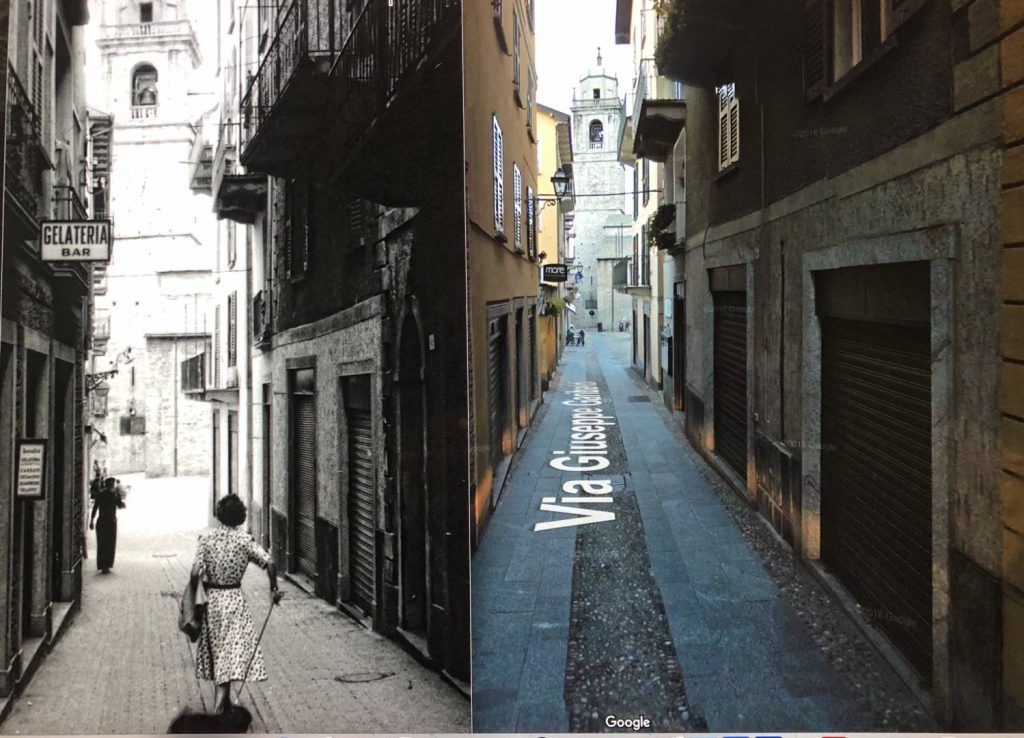
DNA to the rescue?
The quest for the Swiss Roll couple never ends. Just a few weeks ago, a regular reader and friend of the editor, Dunk, raised the interesting possibility of checking the FILCA cassette for DNA. This had not occurred to us at the time of the original article, but it is a fascinating prospect. By eliminating known contacts (primarily William and Mella) we might discover some intriguing connections. Unfortunately, as Dunk says, this would be an expensive operation and only feasible with some form of sponsorship. William and Mella are not holding their breath on this one.
Conclusion
Finding undeveloped film is not a rare event, but most of the long-lost images usually turn out to be mundane and of interest only to the original subjects. Simple holiday snaps with little by way of identification. The Swiss Roll is so different, and that is why it has captivated millions throughout the world. The road trip is now well documented, although the identity of the couple will probably remain one of history’s mysteries. We know so much detail of the journey that the Swiss Roll story never fails to intrigue. But the biggest mystery of all is that the film was never developed, and that the cassette remained in a camera undisturbed. It’s hard not to imaging some dramatic event cutting short the holiday and causing the camera to be abandoned, exactly 74 years ago.
Read a much more detailed account of the Swiss Roll from Macfilos in 2020.
Follow the Swiss Roll story as the months progressed in 2020
Want to contribute an article to Macfilos? It’s easy. Just click the “Write for Us” button. We’ll help with the writing and guide you through the process.

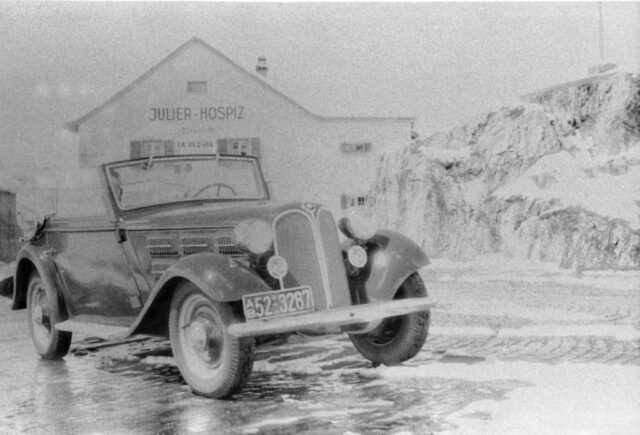
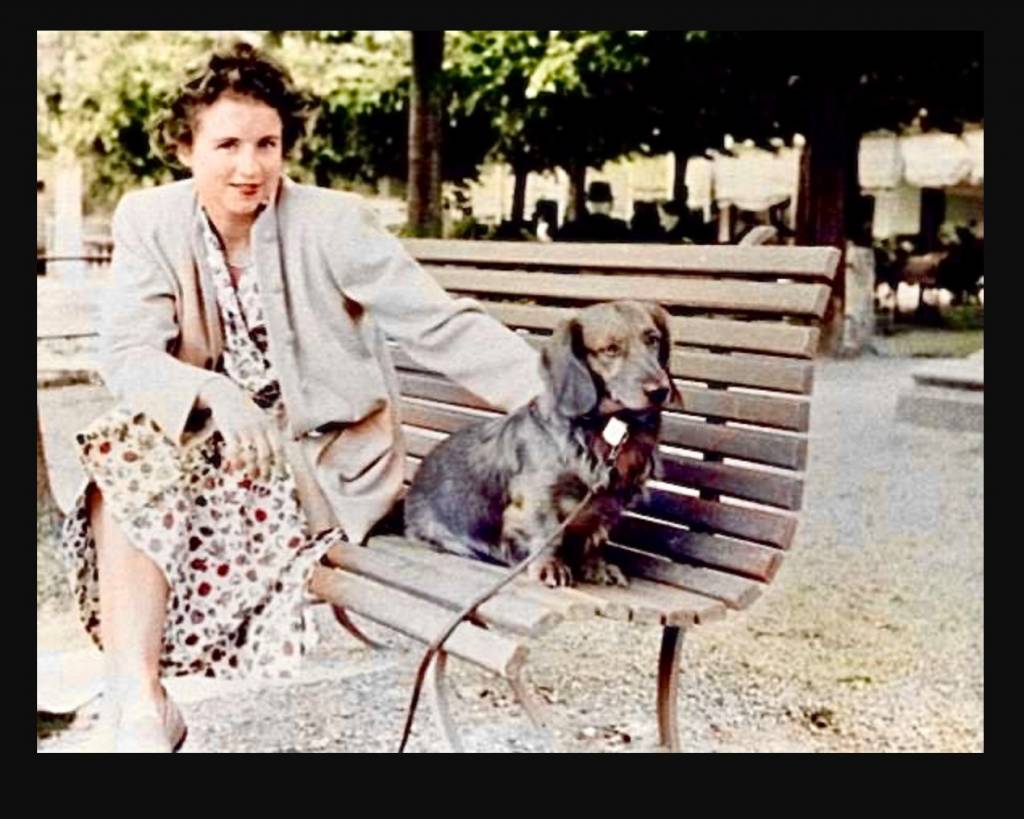
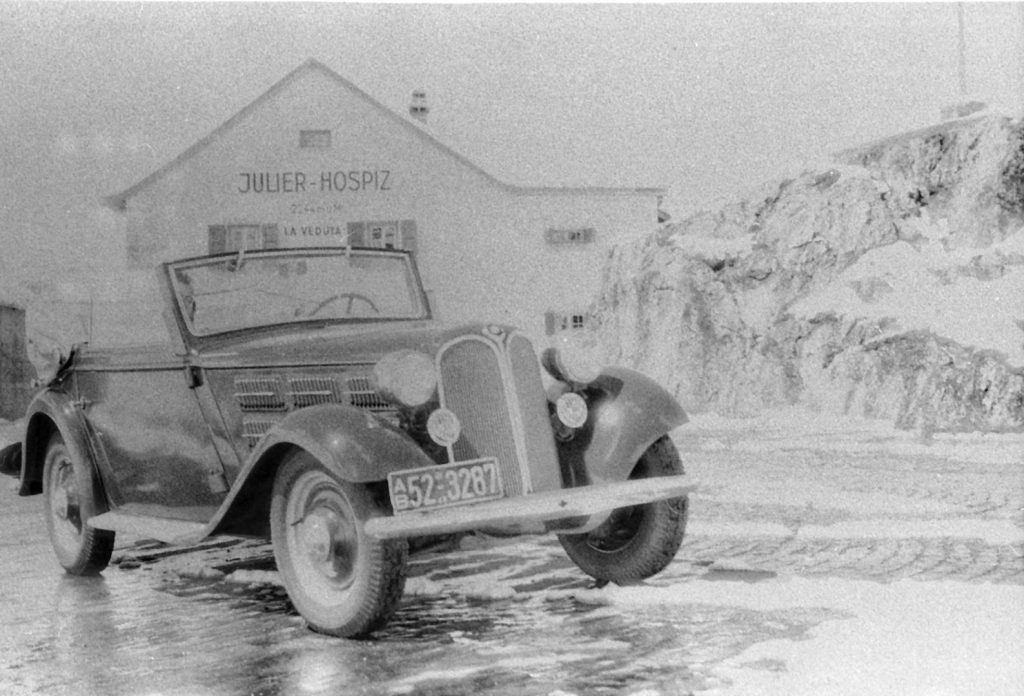
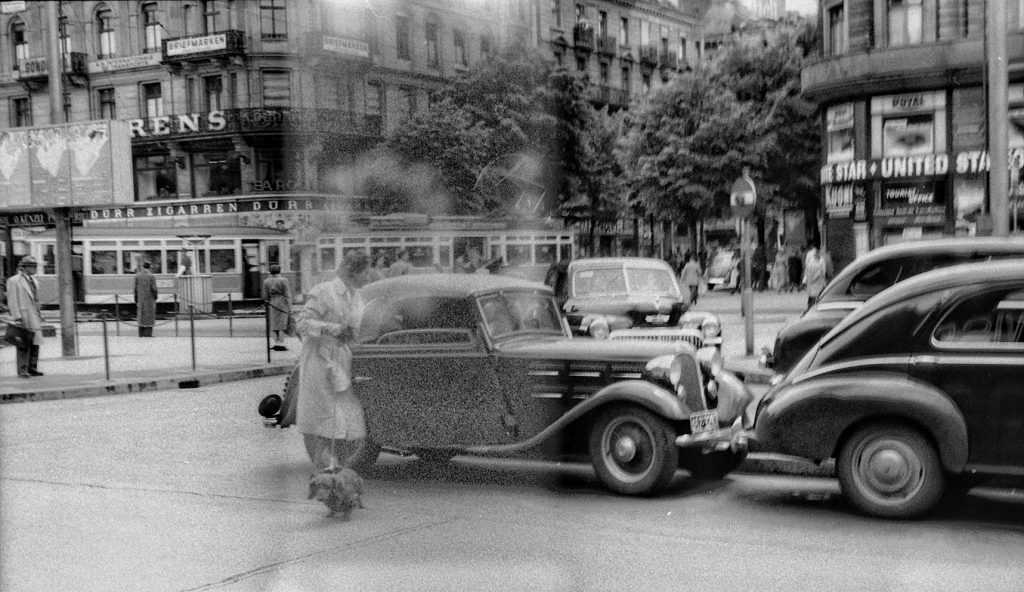
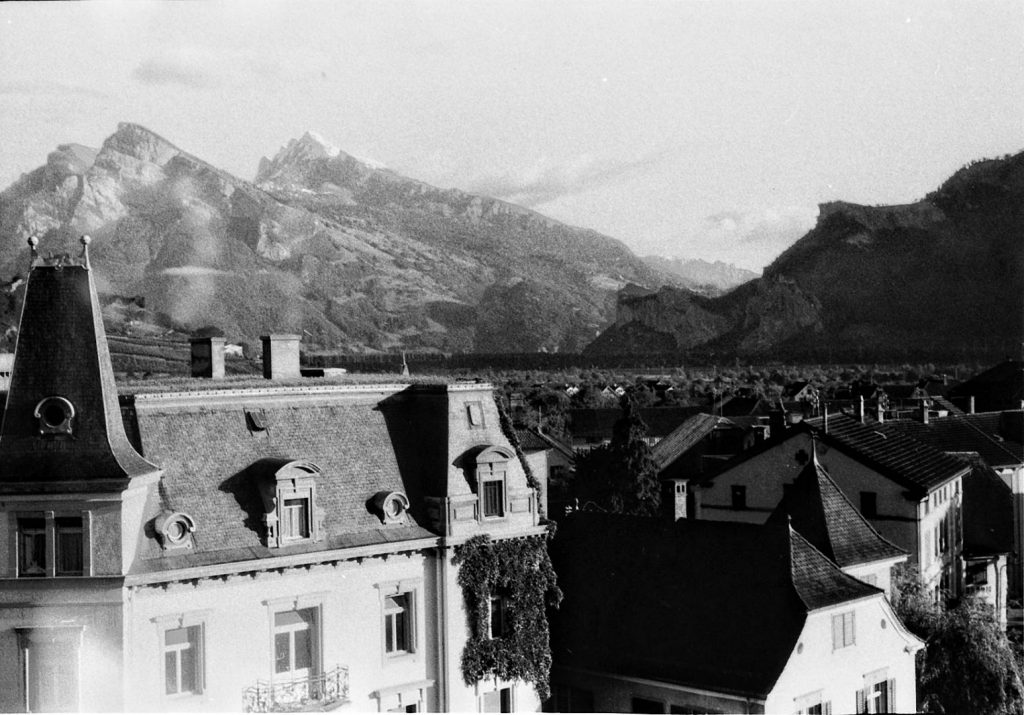
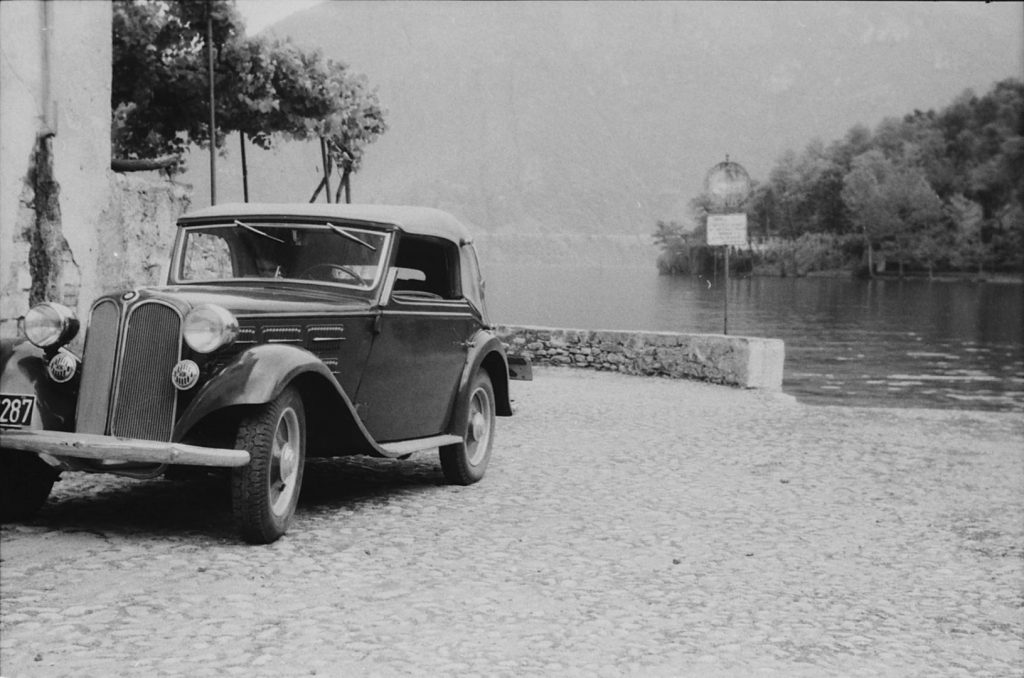
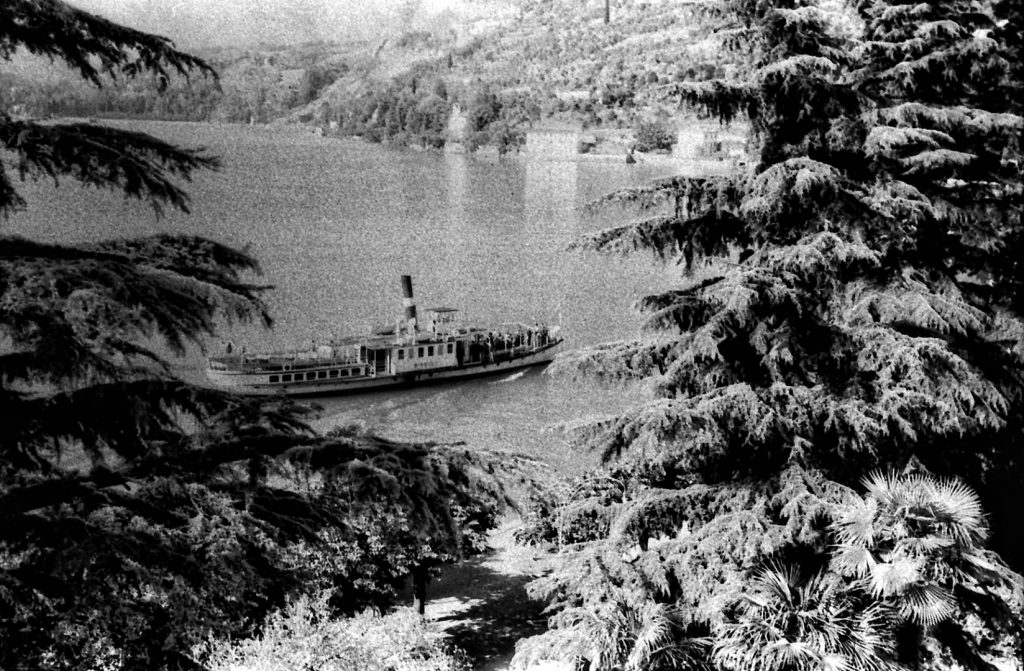
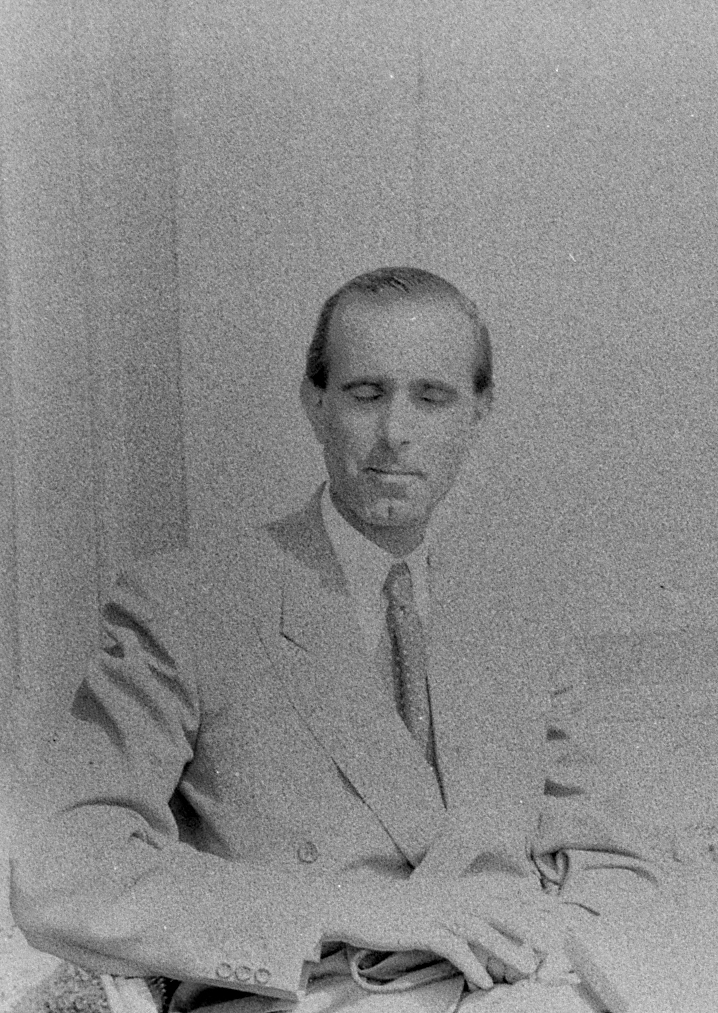




Has anyone looked into the male possibly being Heinrich Franz Wilhelm Prinz von Bayern or Prince Heinrich of Bavaria. He died at age 35 in 1958 in a car crash in Argentina. He married Anne Marie Du Lustrac in July 1951 in Saint-Jean-de-Luz France. She died in a car crash in Italy in 1999.
Nice guess, but a quick search for this “Prince” on the Internet, showed a young man who doesn’t look like the man in the picture at all.
I agree. One phenomenon which I noted doing this exercise was that many prominent people in Germany do not seem to have been photographed in public after WWII. There was one man I looked into, on foot of someone approaching me ,who was a prominent businessman and head of a family firm and who does not seem to have been photographed (or photographs of him are not available) after his wedding in military uniform in 1943. There is a family charitable trust in his name, but there is not one photo of him on the trust website. I am not going to name him, particularly as, to quote the police, I have ‘eliminated him from my enquiries’. There are others with similar interesting stories, relating to WWII and its aftermath.
William
I think I met some of these people when I visited Bariloche in southern Argentina a few years ago. It’s a ski resort that looks like it has been transplanted from Austria or the Sud-Tyrol. It certainly felt like a country retreat and “home away from home” for the German speakers here.
Similarly, we once had a client in our engineering office in SW Florida, who was from Argentina. He had an architect also from Argentina, and a local real estate agent with South American roots.
Sitting around the table in our conference room, the three of them alternated between English, Spanish, and German.
Jon and Martin, they were not just there for the weather, of course, The list of suspects in the Swiss Photos saga also included people working in Ministries at the heart the German Government in WWII, but where most stories fell apart was in respect of the woman. Some women looked similar in some photos, but in others they were quite different or much older and definitely not the woman in the ‘Swiss Roll’ photos. One of the men had an open-top BMW, but also not the one in the Swiss story.
Leica had a long presence in Argentina through Lutz Fernando of Buenos Aires. I have a 1932 Leica II Model D with a Lutz Ferrando engraving and my most recent acquisition, a III from 1934, was said by the Leica Archive to have gone to Argentina, but it actually carries the engraving of a dealer here in Dublin!
William
A perhaps small data point. Assuming that the couple were from Southern Germany (Garmisch license plates) the people who preferred dachshunds were hunters.
Surely Dachshunds were kept as pets in early 1950s.
Possibly, but that young woman does not look anything like a hunter. When I was young, my older brother used to call dachshunds ‘sausage dogs’ and Irish Red Setters ‘sauce dogs’. The dog appears in this story at the beginning on Bahnhofsplatz in Zurich where the young woman appears to be with an older female relative, possibly her mother. My ‘vote’ is for a family pet.
William
Unknown lady on roll film from 1963
Similar story in the Netherlands.
Slightly more than a year ago, a young man bought a Kodak Brownie 2, from an elderly lady during the “free market” organized each year on the King’s birthday. He liked to try and shoot with a camera this old, and he bought it. The women told the young man that the camera had belonged to her father, but she didn’t used it at all, and it was sitting in the attic for many, many years.
The young man paid 20 buck (Euro’s) for it, and the moment he got home and wants to try out the camera, there appeared to be a roll of film hidden in the camera (which is 6×9).
He tried to find the elderly lady to tell her about it, but he searched in vain.
Would they have the film developed or not, as they weren’t sure what kind of pictures were shot at They wondered whether or not have the film developed, maybe there were even pictures from the second world war, they feared. But in the end the local photoshop developed the film, promising not to tell anyone about the pictures he could discover.
It became clear it were ordinary family snapshots. In one of the pictures the pier in Scheveningen – bordering The Hague, and showing the frozen North Sea, were to be seen. This shot was helping to date the picture: the last time that the sea was frozen was in 1963!
The other pictures showed the dunes and various shots of the same children, one of whom must have been the lady who sold the camera.
The young man and his girlfrien did everything to find the lady, but all in vain. Life of young people might chance quickly; they got a house South of Rotterdam, and they hardly ever went back to Amsterdam, while they’re still looking for the lady to give the pictures her father took, when she was a young girl.
This story was published in De Telegraaf, the largest newspaper in the Netherlands, on April 27, this year, told in my own words.
PS. I remember the frozen sea, for it was something very special, and my elder brother and I almost drowned when we got to far on the ice; our father could barely get us out. The strange thing was, that whereas we disappeared almost entirely, and only our heads were above the ice flakes, only our feet were wet. Dad was furious and glad at the same time.
Thanks for this lovely story. It is good that you had this covered by De Telegraaf. We were lucky that a friend of mine at the BBC decided to run it and then it was picked up by the New York Times, CNN and media around the world. That did not allow us to identify the people in the photos, however. I like to think that they were recognised, but for some reason nobody wants to give us their identities for any number of reasons. This adds an air of mystery to the whole thing, of course.
A few weeks ago, on the Leica Forum, somebody showed a nice Leica IIIc camera from around 1945/46 which had belonged to an uncle of his who had been doing inventory work at the Leitz factory in Wetzlar around that time. The camera is now in the US near Chicago and with it came two rolls of exposed, but undeveloped, Ansco Ultra Panchromatic film. I provided details about the ‘Swiss Roll Story’, but he said that he he did not know anyone who could develop these or even give advice on the matter. I referred him on to Dan Tamarkin, the Leica dealer, who is based in Chicago. That story has gained considerable legs on the Leica Forum in a number of different directions as the man in the US also has a considerable amount of contemporary documentation which belonged to his late uncle.
Isn’t it nice, though, how an old roll of film can become a ‘time capsule’, bringing the past into the present?
Thanks once again for that lovely story. I, too, can remember the ‘whole world freezing’ in 1963.
William
A bit closer to home, both literally and figuratively, people in my parent’s generation often wrote identifying information on the backs of photos placed in a family album. It may seem superfluous, since the viewers of the album presumably are family members who will know who the people are. The reason being, of course, is that it takes only the second generation before such memories are lost.
Some of the pics in the ‘Swiss Roll’ seem to appear just as they must on the developed film ..grey and indistinct. But some have been adjusted on a computer, making them look much more ‘natural’ – like the ‘colour’ photo of the woman at the top, adjusted by Bruce – or as we would see photos today.
Why not – why wouldn’t William – adjust them with photo editing software so that they look more like this, for example, and we could relate better to them? https://www.edituk.com/Filca.html
I will leave William to answer this. I think I remember discussing it four years ago, but I’m sure he has good reasons for the decision. Bruce’s colour edit is very compelling, I agree.
I’ve tidied up the grey car picture a bit, too – it makes the punched-in number ‘3’ at top-left a bit more noticeable ..film number 3? ..how would that get there?
David.
Thanks, David
The frames were of varying quality and condition, thanks to the occasional opening of the FILCA cassette over the years, including by myself. I am very adept at post processing on a computer, but I gave the images as much processing as they needed as I was concerned not to overdo any of this because of the ‘detective’ aspects of the exercise. The Town Hall at Bad Ragaz and the car beside the lake are pretty much as they came out of the darkroom. The colorisation was done by somebody called Bruce Singer. Mike might remember who he was. I think that was done because there was some discussion about the Horrocks’ frock the woman was wearing. Someone in the US suggested that as it contained an image of a particular cactus found in one part of the US West that the person might be from there, but we found the exact same pattern in an advertisement for Horrocks’ dresses in an edition of an Australian woman’s magazine from 1950.
Some images required a lot of processing to show any detail because they were very over exposed such as the image of the man above which was crop from a larger image. The extreme grain on this is a dead giveaway. It took all of my post processing skills to produce any image of what the man actually looked like. He is almost invisible on the original negative.
Anyway, this was not intended to be a ‘beauty parade’ and I had thought that the purpose of the exercise was quite clear. About a week ago I had a discussion with Mella about doing some prints of the images. We might do this some day, but right now neither of us has the capacity or time to do this.
William
Fascinating to read about this again. And good to revisit the story here for the benefit of new readers.
Makes me think again about the undeveloped film I have, about 12 years old, wherein the photographer is known (me) and the subjects probably identifiable. Some are C-41, which can be readily developed commercially, and much more intriguing, some are Kodak Technical Pan, for which I still have some developer packets.
Now, if I only had one of the elusive round tuits . . .
Thanks Martin, 12 years is not too long, but the film will have lost some sensitivity and there are tables available online which show how to allow for that. You will also know the original ‘box speed ‘ of the film, which we did not know in the case of the ‘Swiss Roll’. In fact we still don’t know what it was, just that it was some Perutz bulk film.
Let us know how you get on with it.
William